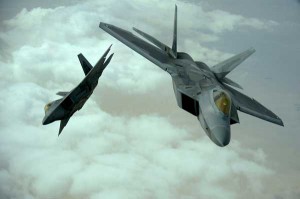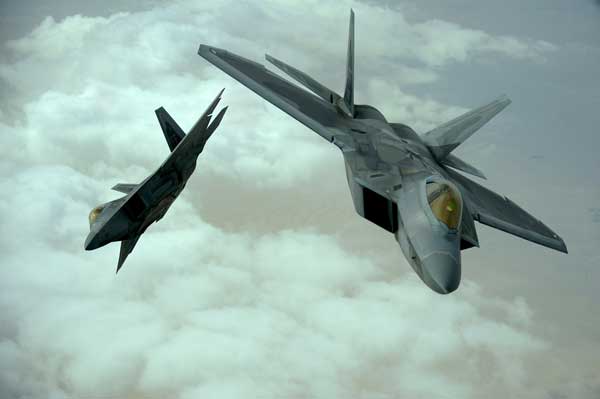2012-09-30 By Richard Weitz
Although the Japanese-U.S. security relationship has evolved considerably since the end of the Cold War, the fundamental bargain enshrined in their mutual security treaty has remained.
The United States will defend Japan from external aggression while the Japanese will facilitate this process by hosting U.S. military bases and contributing to their own self-defense.
Tokyo and Washington have frequently restructured the U.S. military presence in Japan in accord with global, regional, bilateral, and unilateral requirements.
A recurring source of bilateral tension is that the 3rd Marine Expeditionary Force (III MEF) at Futenma is located in a densely populated district of the city of Ginowan in Okinawa Prefecture.
Although the U.S. military presence at Okinawa accounts for less than one percent of Japan’s soil but hosts almost two-thirds of all the American forces in Japan.
The Japanese and U.S. governments in 1996 reached an agreement on the return of Futenma base, but the deal was never implemented. Hence, a bilateral agreement was signed in 2006 on building an alternative facility in the coastal city of Chinook in Nago north of Okinawa.
After the Democratic Party of Japan (DJP) came to power in 2009, pledging to move Futenma base outside Okinawa, the situation surrounding the base worsened. The Japanese Prime Minister at that time, Yukio Hatoyama, sought to move the base to Tokonoshima Island of Kagoshima County, but opposition arose from the local population and Washington alike.
A solution may have been found in April 2012, when the Pentagon announced plans to transfer 9,000 Marines from Okinawa to Guam, Hawaii, and Australia, while returning much of the land that they occupy to the Japanese.
The focus of Japanese Defense Minister Satoshi Morimoto’s August 2012 meetings in Washington, his first foreign visit since being appointed in June, was the 12 MV-22 tilt-rotor Osprey aircraft that the Pentagon wants to incorporate into Marine Corps operations based in Japan.
A dozen Ospreys were delivered to Iwakuni Air Station, the only U.S. Marine Corps station in the main Japanese islands in Yamaguchi Prefecture, in July for test flights before their deployment with the III MEF at Futenma. Their full operational capacity is scheduled for October.
Two recent Osprey crashes, in Florida and Morocco, resulting in the deaths of two people and injuring another five, deepened Japanese concerns regarding the aircraft’s safety, but the Pentagon considers the Osprey sufficiently safe to warrant its replacing older, less effective Marines helicopters such as the CH-46 at Futenma. Defense Department officials briefed a visiting Japanese delegation on the incidents in June.
Nonetheless, local opposition to the deployment remains high and partly reflects aversion to the continued U.S. military presence at Okinawa. The governors of Iwakuni and Okinawa have supported protestors claiming that the Ospreys are unsafe.
Prime Minister Yoshihiko Noda has stated that he will not allow any Osprey tests flights until his government determines that the planes do not threaten the residents. U.S. officials have pledged that the Ospreys will not be used in Japan (though they will remain usable everywhere else) until Japanese safety concerns are satisfied.
Last month, with Morimoto by the side, Defense Secretary Leon Panetta said that the Department was reviewing the reasons for the crashes and would share the investigation’s results with the Japanese government.
Defense Minister Morimoto and other Japanese officials back the Osprey deployment because it will enable the Marines to fly farther and faster, which would help them defend Japan’s remote islands as well as support other East Asian contingencies in a region the Pentagon has identified as having increased strategic priority.
Indeed, the Osprey is now at the end of its first five years of deployment is well on the way to transform USMC operational capabilities. And these capabilities are very much at the heart of the capability to provide for a “dynamic defense” of Japan.
The speed and range as well as the self deploying capabilities of the Osprey can expand the perimeter of the defense of Japan, precisely as the North Korean and Chinese capabilities and actions require such an expansion to even stay in place.
Although Japan’s defense budget continues to decline, the Japanese government is investing in new air and naval capabilities to defend its remote islands from China or other potential adversaries.
Prior to Morimoto’s visit, U.S. Deputy Defense Secretary Ashton Carter traveled in Japan on July 20 as part of his Asia-Pacific tour to discuss defense strategy with these countries. He also visited Thailand, Guam, India, and South Korea, but in an effort to reassure the Japanese about their value to Washington, Carter described Japan as the United States main ally in Asia, explaining that was why, “Naturally I come here first, to Tokyo.”
During his trip, Carter expressed his hope that, by cooperating to resolve the Osprey issue, the United States and Japan could strengthen their mutual trust.
Carter met with Japanese government officials such as Foreign Minister Koichiro Gemba, Parliamentary Senior Vice-Minister of Defense Shu Watanabe, and Morimoto. He praised the Japanese leaders for thinking big “both functionally and geographically.”
Carter also conferred with Air Force Lt. Gen. Sam Angelella, commander of the 40,000-strong U.S. Forces Japan. While aboard the USS Blue Ridge, a U.S. naval ship posted in Yokosuka that had been the command center for U.S. military support to Operation Tomodachi, the Japanese-led humanitarian assistance and disaster relief effort following the March 2011 earthquake and tsunami. Carter thanked the crew and told them they lay at the epicenter of strategic transition from Iraq and Afghanistan to Japan.
Another major topic of Carter’s discussions was Japan’s role in manufacturing the F-35 stealth fighter.
In December 2011, the Japanese Ministry of Defense decided to adopt the F-35A as the Air Self Defense Forces’ next-generation fighter, as a successor of the F-4.
As Robbin Laird has pointed out, “The F-35 will be a cornerstone of Japanese defense. The Japanese know something about technology. As a leader in technology worldwide, the Japanese decision validates the cutting edge role of the F-35.”
The F-35 was selected over the F-22A, F-15FX, F/A-18E, Typhoon, and Rafale.
The Ministry considered the following factors in its evaluations:
(1) High-level performance, including effective response to high-performance aircraft with stealth and high situational awareness capabilities, sufficient ability to respond to cruise missiles, and the ability to effectively execute network-centric operations with components such as Airborne Warning and Control System (AWACS) and antiaircraft missiles;
(2) To ensure high efficiency, the establishment at a reasonable cost of efficient and stable backup logistic support with outstanding reliability and serviceability;
(3) The participation of domestic companies to promote the maintenance and development of the domestic defense industry and technological infrastructure; and
(4) Consideration of life-cycle costs including costs of maintenance and operation after introduction.
Both the United States and Japan are counting heavily on the F-35 to play a major role shaping combat capabilities in the coming decades.

Japanese authors note the imperative of rapidly completing development and production of the planes as soon as possible.
When in Japan, Carter stressed that Lockheed Martin Corporation, the prime contractor of the fighter aircraft, will choose which countries will make parts of the fighter, based on economic efficiency. It will also be Lockheed Martin, rather than the U.S. Defense Department, which will negotiate directly with Japan on the issue.
But consequences of the F-35 as a global fleet makes the Japanese F-35s part of a web of a defense enterprise, which can blanket the Pacific. Indeed, the F-35 is part of the new approach to shaping the “big blue blanket” which the U.S. and allies are seeking to shape for 21st century Pacific defense.
Indeed, the Osprey together with the F-35s and F-22s will provide a significant capability to ensure for the “dynamic defense” of Japan.
They will enhance the contribution of Japanese-based US and Japanese forces for regional defense as well.
In an era of growing challenges and demands, such capabilities are essential to an effective 21st century Pacific strategy.


